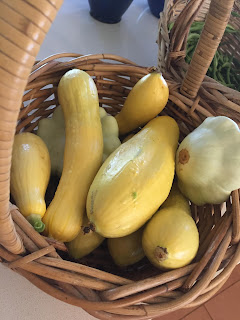Lasagna Garden
Right now our new raised beds are covered with freeze cloths to protect them from our cold weather. Although we did not have a successful summer or fall garden (at one point in October the soil temperature was 100 degrees), the winter garden is looking much better. Before they were covered a few days ago, the beds held radishes, carrots, peppers, onions, cabbages, cauliflowers, broccoli, Swiss chard, kale, several kinds of lettuce, cilantro, parsley, rosemary, Mexican mint marigold, several kinds of basil lemon verbena, sage, thyme, blackberry bushes, sugar snap peas, sweet peas, blue and white mistflowers, and two tomato vines. We'll see what survives the freeze.
Meanwhile...with the help of the Wilson County Extension Master Gardeners, we have completed the construction of a lasagna garden in front of The Bee and the Clover. It's called a lasagna garden, because it has layers like a lasagna, Our intent is to plant a demonstration garden of fragrant, white native plants. The only plant in the patch right now is White Brush (Aloysia gratissima). We transplanted it from the prairie. It has wonderfully fragrant white blooms that the bees love.
Here's the process for the lasagna garden. First, we outlined the garden with native stones that we had collected from the prairie.
Then we covered the area with cardboard. We'd been saving it for a while. It's amazing how much cardboard it took to cover the garden.
Then we watered the cardboard layer down very well.
Next we added a layer of mulched grass clippings and leaves. We soaked that layer also.
Then a layer of compost from our compost pile. We had been composting kitchen scraps and shredded junk mail and newspapers for about six months. It was lovely. We also wet that layer down.
 | ||
Finally we covered it over with a layer of mulch and watered it in. That mulch was delivered to us free of charge from Floresville Electric Light and Power System.
It all looks great and cost us $0. Well, it did cost us some labor and planning. Thanks to Cheryl, Robert, Melinda, Ann, Teri, and Brenda for all your good help.
The plan is that all those layers will begin to decompose and create rich, weed-free soil for us to grow our native plants in. We're basically making a very large flat compost pile. The disadvantage is that it takes a little while for that all to happen. So waiting is part of the whole process. Sometimes nature just takes its own time for things.
We'll be excited to begin planting late in the spring and see the flowers of our labor. We're planning to add these white fragrant natives to the garden. Do you have any other suggestions for us?
- White mistflower
- New Jersey tea
- Boneset
- White coneflower
- White salvia
- moonflowe
- star jasmine
- canyon daisy
- chamomile
- butterfly sage
- ten-petal anemone
- bull nettle
- black haw
- pussyfoot
- white rain lillies
- bee brush
- white honeysuckle
- Texas prickly poppies
- Texas leather flower
- Texas toadflax
- White-flowered milkweed
- lazy daisies
- bear grass
- white verbena
- white petunia
- Texas virgin's bower














Comments
Post a Comment